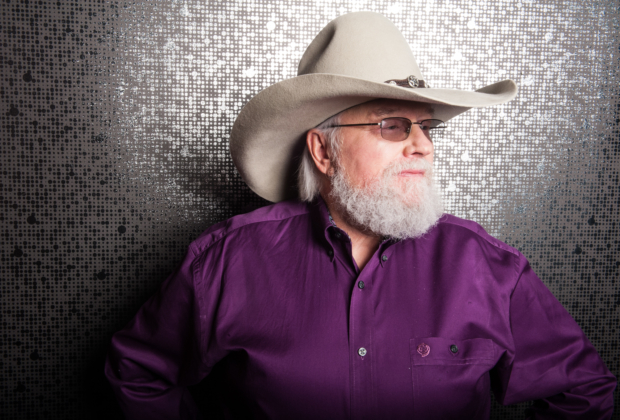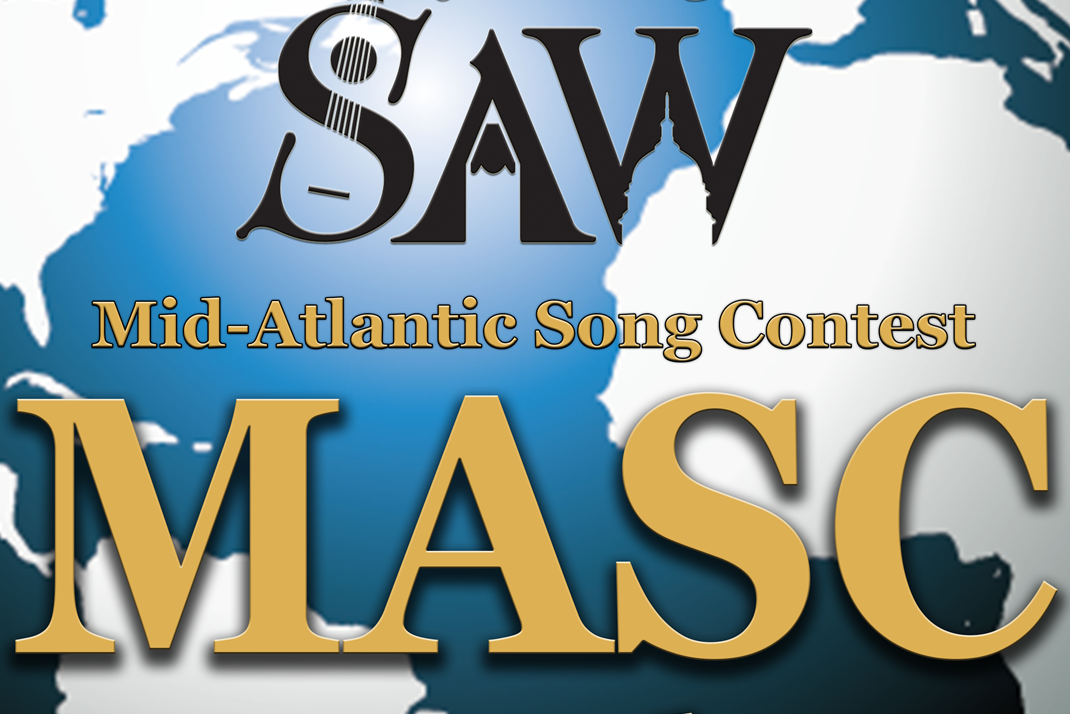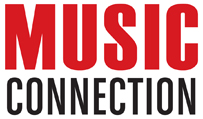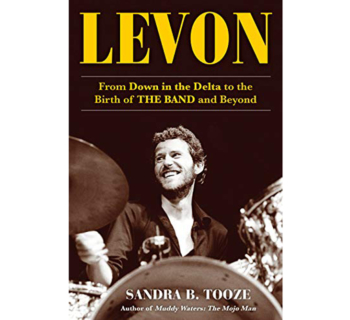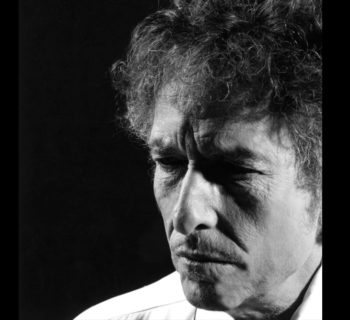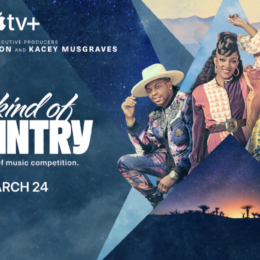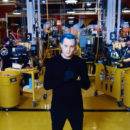Country Music Hall of Fame, Grand Ole Opry member and southern rock legend Charlie Daniels passed on Monday, July 6, at Summit Medical Center in Hermitage, Tennessee. Doctors determined the cause of death was a hemorrhagic stroke. Daniels was 83.
Charlie Daniels was a singer, songwriter and multi-instrumentalist known for his contributions to southern rock and bluegrass in addition to country. From his Dove Award-winning gospel albums to his genre-defining southern rock anthems and his CMA Award-winning country hits, few artists have left a more indelible mark on America's musical landscape than Charlie Daniels.
An outspoken patriot, beloved mentor, and a true road warrior, Daniels parlayed his passion for music into a multi-platinum career and a spotlight supporting the military, underprivileged children, and others in need. The Charlie Daniels Band has long populated radio with memorable hits such as the signature song, "The Devil Went Down to Georgia."
Over the course of his career, Daniels received numerous accolades, including becoming a member of the Grand Ole Opry in 2008, inductions into the Musicians Hall of Fame in 2009 and the Country Music Hall of Fame in 2016.
Charles E. Daniels was born October 28, 1936 in Wilmington, North Carolina. In 1953 he performed in a bluegrass band, the Misty Mountain Boys, with childhood friend, Russell Palmer, and wrote his first song. By 1958 he began his professional music career performing with The Rockets.
At the age of 23, as a professional musician, with the instrumental rock & roll combo, the Jaguars, the group (1959-1967) landed a recording session for Epic Records with Bob Johnston, who would later become Columbia Records' leading folk and country producer. The band’s name changed to The Jaguars when the record was released. Daniels then co-wrote “It Hurts Me” with Bob Johnston which was recorded by Elvis Presley and put on the flip side of “Kissin Cousins.”
In 1965 Bob Johnston joined Columbia Records as a staff producer. In 1967, Charlie was invited by Johnston to join him in Nashville, Tennessee. During 1969 Daniels was invited to play on Bob Dylan’s Nashville Skyline. The following year Charlie recorded with Leonard Cohen on the Johnston-produced Songs From A Room. Daniels went on tour with Leonard Cohen.
Daniels then produced the Youngbloods’ Elephant Mountain and Ride the Wind, the latter recorded live at a rock festival in Louisiana and at the Fillmores East and West.
In 1970 he appeared on Ringo Starr’s Beaucoups of Blues and cut his debut solo album Charlie Daniels for Capitol Records. By 1972 he formed the Charlie Daniels Band and helped usher in the first wave of Southern rock bands.
Over the last half century Charlie Daniels was a very active recording and touring musician. I met Charlie Daniels in the early seventies when he was recording for Kama Sutra Records and did a date at the Whisky a Go Go in Hollywood. Bassist Billy Cox of Band of Gypsys fame was in the band.
In 2014 I interviewed Charlie for my book on Leonard Cohen Everybody Knows. That same year Daniels released his collection of Bob Dylan tunes Off the Grid: Doin’ Dylan.
Harvey Kubernik and Charlie Daniels Interview
Q: You are heard on three Bob Dylan albums: Nashville Skyline, New Morning and Self-Portrait. Tell me about your friend producer Bob Johnston.
A: “I went back to 1959 with Bob Johnston. I met him when I went through Ft. Worth Texas on my way to California for the first time with a band. Bob was working at Bell Helicopter in the day time and at night trying to get something going record wise or songwriting at night time.
So we wrote something together at his mother’s house, an instrumental called ‘Jaguar.’ We struck up a friendship there. In 1962 and Bob said ‘let’s write.’ So I had this idea for a song, the basic, ‘it hurts me.’ ’OK. Let’s write that one.’ At the time, Bob was staff writer for Hill and Range which handled Elvis Presley’s music publishing. And they held it for a year and finally decided to record it. ‘It Hurts Me’ that Elvis Presley recorded and put on the flip side of ‘Kissin’ Cousins.’
When Bob Johnston moved to Nashville in 1966 he called me and said, ‘Why don‘t you come to Nashville?’ And I always wanted to live there and packed up in 1967. He had just done Bob Dylan’s Blonde on Blonde. All the good things that happened to me in the early days were because he was a cog in the wheel.
In ‘67 and ’68 Bob produced the albums John Wesley Harding and Johnny Cash at Folsom Prison. Bob had gained credibility. He was also at the same time, bringing Dylan and Leonard Cohen into town who had never lived here. One thing that needs to be said about Bob Johnston and bringing people to town like Dylan and Leonard Cohen. There was skepticism about Bob coming to Nashville because he was taking the place of a legendary producer, Don Law, who was an institution in town.
Here’s this guy Johnston from New York, who had been doing Simon & Garfunkel, Bookends, Dylan, and now Leonard Cohen, who were not really thought of as being country. But the first thing Bob did when he came to town was to do a number one song with Marty Robbins. And in ‘68 produced the albums John Wesley Harding, Flatt & Scrugg’s The Story of Bonnie and Clyde, and of course, Johnny Cash’s live album at Folsom Prison.
He had gained credibility. He was also at the same time, bringing Al Kooper, Dylan and Leonard Cohen into town who had never lived here. Dylan recorded in Nashville in 1966 for a while, but it was he’d come to town, do his stuff, and leave. Dylan happened to record in a studio in Nashville and worked in it.
And, hassles with long hairs, prejudice, racism, didn’t exist in our world. In the sixties everything was pretty much in the throes of a lot of upheaval. This was back in Martin Luther King, Jr.’s salad days, when he was going around, doing things that a lot of people didn’t understand it or didn’t get it. I was in Nashville when Dr. King was assassinated in Memphis. The thing was, when you’re goin’ in to make music that is a whole other thing.
Nobody wanted to work in the big [Columbia] studio until Bob Johnston came to town and basically took it over. Nobody else wanted to be there. He worked with it, got engineers he enjoyed working with like Neil Wilburn, and he actually brought an engineer from New York with him when he first came down.
The Columbia Studio was union. In Nashville, in the studios, you had to have the machines to be a certain distance away from the boards so the engineer could not work them both. But the thing I remember mostly about Studio A., the big studio, it was the new studio. The old studio, the Kwansit Hut, was the legendary studio where the hits had been cut. Everybody wanted to work in that room."
Q: “Tell me about Leonard Cohen"
A: “Leonard Cohen came to Nashville in September of 1968, and lived locally in a cabin. I actually picked up Leonard Cohen at the airport when he arrived in Nashville with his friend Henry [Zemel] from Montreal. Johnston was booked in a studio. I had long hair and a mustache. I didn’t know who Leonard Cohen was. I knew he was a recording artist and comin’ to town and that we were gonna do some sessions with him. I didn’t know what he did. I knew he had a song called ‘Suzanne.’
You don’t know what to expect when you go to meet somebody for the first time who is a totally different kind of musician than anyone you’ve ever been exposed to. You don’t know what kind of personality they have or what they’re gonna be like. But it was a very pleasant surprise that Leonard Cohen was as down to earth and nice as he could be. He spoke a different way than everybody else around there did. But he had a great sense of communicating with people.
I will never forget that when Leonard came to Nashville he lived out in the country for a while. And there was a guy who lived out there, an old cowboy called Kid Marley. I mean, people who came from totally opposite ends of the spectrum. It was Leonard Cohen and Kid Marley. But they just hit it off and got to be friends. Leonard was just that kind of guy.
When we started doing shows with Leonard in 1970 and when we did the songs things would be so quiet, people would be so in to what he was doing. They wouldn’t miss a lyric or a sound. You could have literally heard a pin drop. Reverence might be the wrong word but people were so in to what he was doing.
I did learn from working with Bob Johnston and Cohen that ‘less is more.’ And to go play music with a guy like Leonard Cohen, whose music was so fragile, you just stayed out of his way. That was basically what you wanted to do. The best way I know to describe it is that you listen to Leonard and his guitar.
Wherever he was, wherever there was a part that you’d think that what you would do would interfere and you just stayed out of it. You didn’t try to embellish what he was doing. You just tried to fit in. And there was a whole mind set to that. And after I got used to the mindset it went really well. That was the approach to it. It was relaxed. That was the thing about his music. It was so fragile. It was so ‘stay out of the way.’
With people like Cohen and Dylan…Most of the Nashville sessions, the country artists they would bring a demo in, they’d play the demo, you play it like the demo, you may change a key on it, but basically it’s gonna be the same thing, how they want the demo. So you’re playin’ pretty much inbounds.
With Leonard and with Bob Dylan, and it was on a Dylan, and Charlie McCoy was the band leader. And how much do you want him to play? How many bars? How much do you want him to do? And Dylan replied, ‘all he can.’ Well that really describes what this is all about.
Cohen and Dylan were singers and songwriters. They write their songs, they weren’t coming in from a music publishing company. It was a lot different because there is no hurry. We went into the studio. Like with Nashville Skyline we had about fifteen sessions booked to do it and probably only used half of them and it was over. Everybody got so in to what they were doing. If you listen to Dylan, the stuff before and after, Nashville Skyline stands out. It’s a different kind of record. The material was a little different and dealt with different themes.
Nashville Skyline and John Wesley Harding are two different records to me. The Nashville Skyline record was a departure for Dylan. It was just so different than anything I had heard him do. ‘What else you got Bob? We got this one done.’ And of course, Dylan is a big first take guy. If you can get it on the first take that’s how he wants it. And I like that about him. I’m the same way.
The best way I know to describe it is that you listen to Leonard and his guitar. Wherever he was, wherever there was a part that you’d think you would do or that would interfere with you, just stayed out of it. You didn’t try to embellish what he was doing. You didn’t try to guide what he was doing. You just tried to fit in. And there was whole mind set to that. And after I got used to the mindset it went really well. That was the approach to it. It was relaxed.
Now Leonard Cohen tuned his guitar down a full step and how he played it I could never figure out. Because he had his string tuned down a full step and he played a gut string guitar. That’s impossible. I mean, in my world I couldn’t do it. No way. My touch has never been that soft. And to have a touch that soft…That was the thing about his music though. It was so fragile. It was so ‘stay out of the way.’
Must have done ten songs, including ‘The Partisan,’ Five or six were on Songs From A Room, and another on his next album, Songs of Love and Hate. I’m on ‘Bird On the Wire’ that has been covered by many people.”
(Harvey Kubernik is the author of 18 books, including Canyon Of Dreams: The Magic And The Music Of Laurel Canyon and Turn Up The Radio! Rock, Pop And Roll In Los Angeles 1956-1972.
Sterling/Barnes and Noble in 2018 published Harvey and Kenneth Kubernik’s The Story Of The Band: From Big Pink To The Last Waltz. For 2021 they are writing and assembling a multi-narrative book on Jimi Hendrix for the same publisher.
Otherworld Cottage Industries on July 30, 2020 will publish Harvey Kubernik’s 500-page book, Docs That Rock, Music That Matters, featuring Kubernik interviews with D.A. Pennebaker, Albert Maysles, Murray Lerner, Morgan Neville, Michael Lindsay-Hogg, Andrew Loog Oldham, John Ridley, Curtis Hanson, Dick Clark, Travis Pike, Allan Arkush, and David Leaf, among others.
Kubernik’s writings are in several book anthologies, most notably The Rolling Stone Book Of The Beats and Drinking With Bukowski. He was the project coordinator of the recording set The Jack Kerouac Collection.
During 2006 Harvey Kubernik spoke at the special hearings initiated by The Library of Congress that were held in Hollywood, California, discussing archiving practices and audiotape preservation.
In 2020 Harvey served as Consultant on Laurel Canyon: A Place In Time documentary directed by Alison Ellwood which debuted om May 2020 on the EPIX/MGM television channel.
Kubernik has just penned a back cover book jacket endorsement for author Michael Posner’s book on Leonard Cohen that Simon & Schuster, Canada, will be publishing this fall 2020, Leonard Cohen, Untold Stories: The Early Years).

